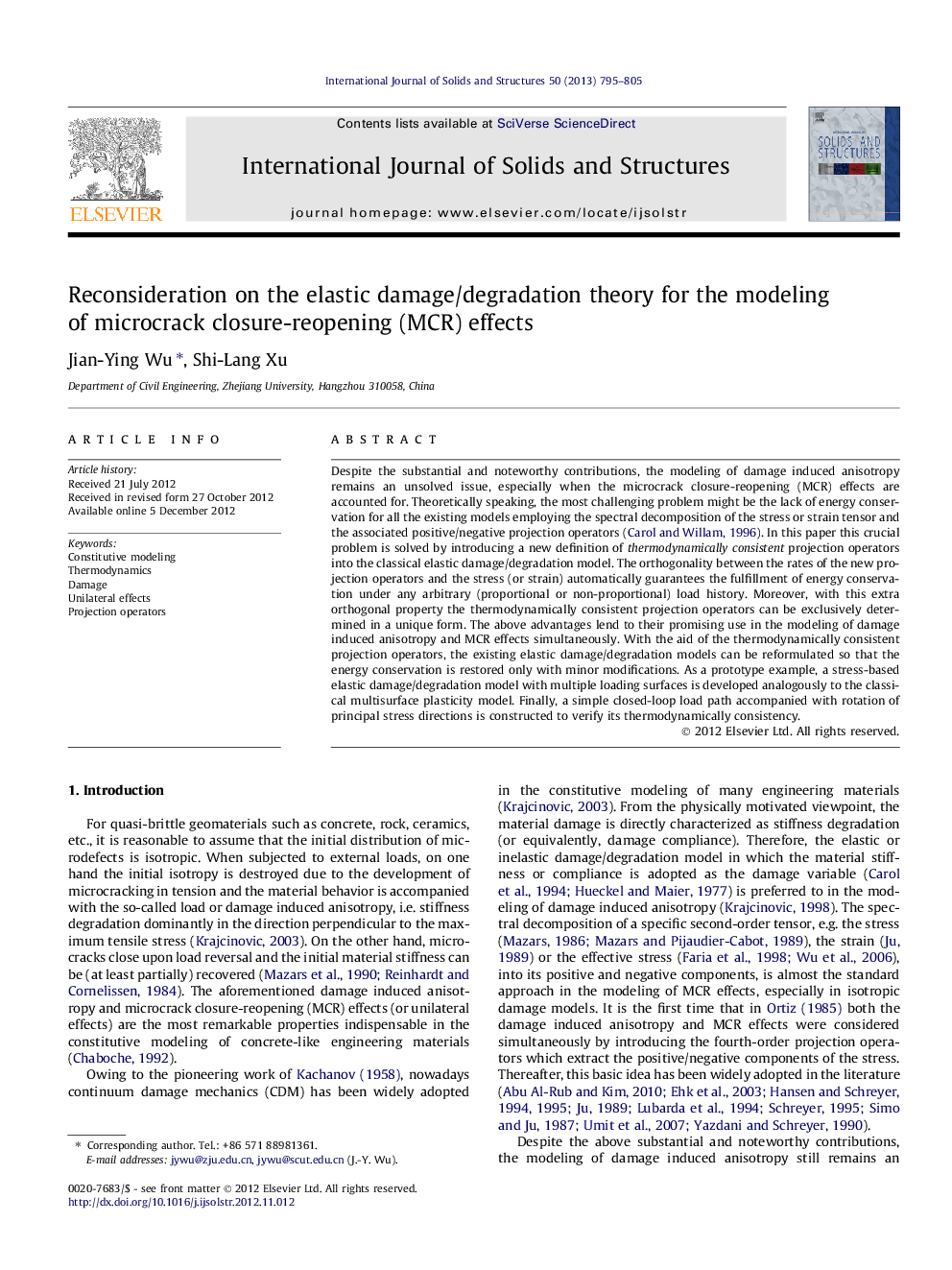| Article ID | Journal | Published Year | Pages | File Type |
|---|---|---|---|---|
| 278067 | International Journal of Solids and Structures | 2013 | 11 Pages |
Despite the substantial and noteworthy contributions, the modeling of damage induced anisotropy remains an unsolved issue, especially when the microcrack closure-reopening (MCR) effects are accounted for. Theoretically speaking, the most challenging problem might be the lack of energy conservation for all the existing models employing the spectral decomposition of the stress or strain tensor and the associated positive/negative projection operators (Carol and Willam, 1996). In this paper this crucial problem is solved by introducing a new definition of thermodynamically consistent projection operators into the classical elastic damage/degradation model. The orthogonality between the rates of the new projection operators and the stress (or strain) automatically guarantees the fulfillment of energy conservation under any arbitrary (proportional or non-proportional) load history. Moreover, with this extra orthogonal property the thermodynamically consistent projection operators can be exclusively determined in a unique form. The above advantages lend to their promising use in the modeling of damage induced anisotropy and MCR effects simultaneously. With the aid of the thermodynamically consistent projection operators, the existing elastic damage/degradation models can be reformulated so that the energy conservation is restored only with minor modifications. As a prototype example, a stress-based elastic damage/degradation model with multiple loading surfaces is developed analogously to the classical multisurface plasticity model. Finally, a simple closed-loop load path accompanied with rotation of principal stress directions is constructed to verify its thermodynamically consistency.
